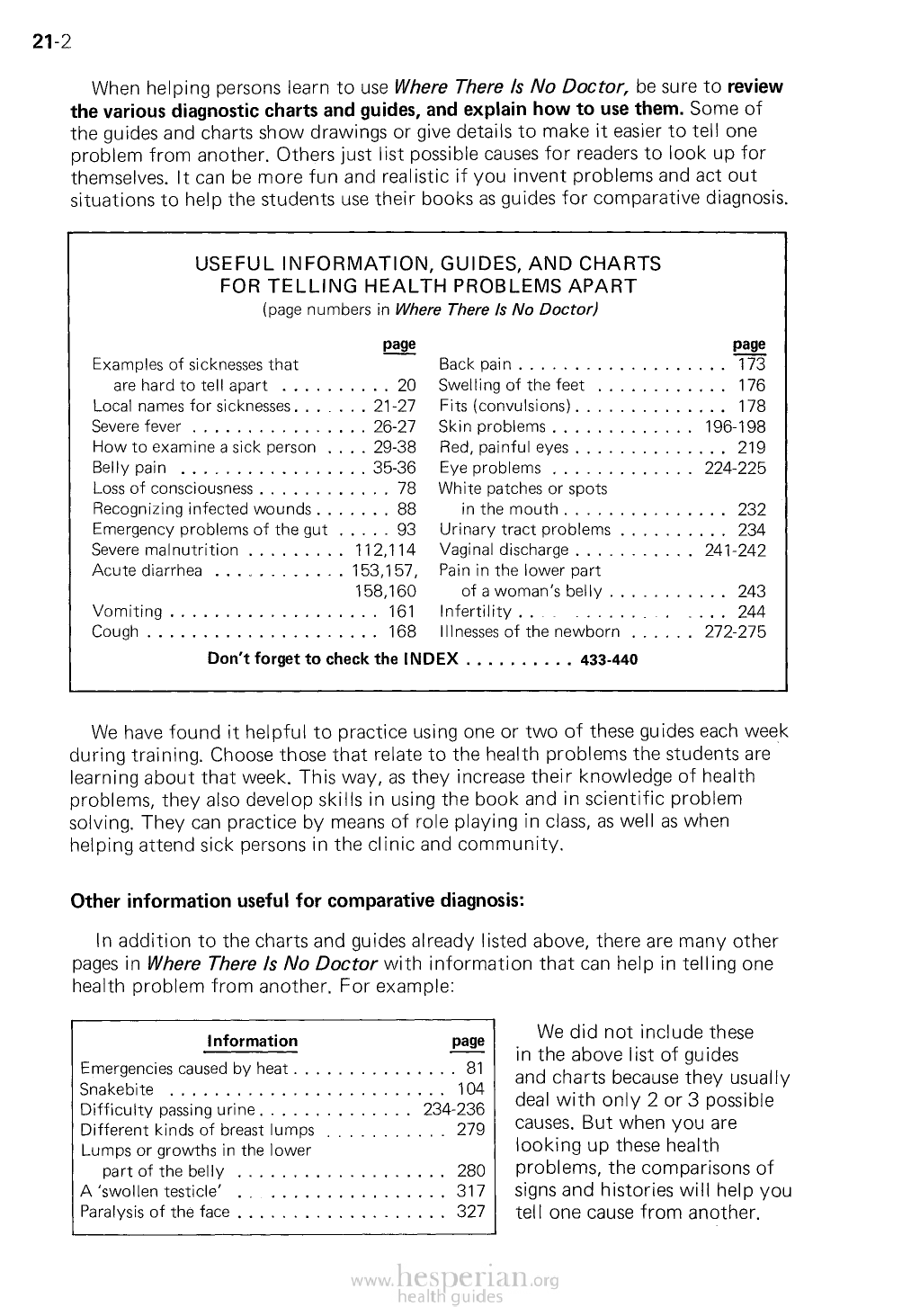
21-2
When helping persons learn to use Where There Is No Doctor, be sure to review
the various diagnostic charts and guides, and explain how to use them.
Some of the guides and charts show drawings or give details to make it easier to
tell one problem from another. Others just list possible causes for readers to look up
for themselves. It can be more fun and realistic if you invent problems and act out
situations to help the students use their books as guides for comparative diagnosis.
We have found it helpful to practice using one or two of these guides each week
during training. Choose those that relate to the health problems the students are
learning about that week. This way, as they increase their knowledge of health
problems, they also develop skills in using the book and in scientific problem
solving. They can practice by means of role playing in class, as well as when
helping attend sick persons in the clinic and community.
Other information useful for comparative diagnosis:
In addition to the charts and guides already listed above, there are many other
pages in Where There Is No Doctor with information that can help in telling one
health problem from another. For example:
We did not include these in
the above list of guides and
charts because they usually
deal with only 2 or 3 possible
causes. But when you are
looking up these health
problems, the comparisons of
signs and histories will help you
tell one cause from another.